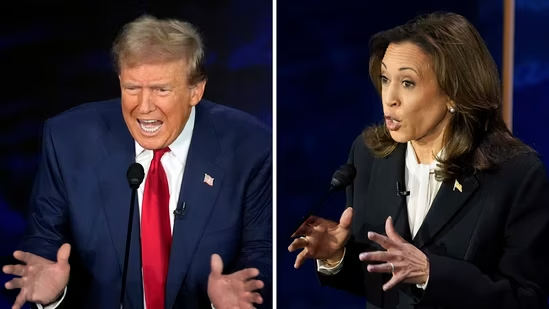Close contest

As the US presidential election inches closer, with exactly a week remaining, the largest and most influential democracy of the world is bracing for a tight contest between two leaders who couldn’t have been more different. By choosing between the Democrat Kamala Harris and Republican Donald Trump, Americans will choose one from the two entirely different visions of America, as also its future, for at least four years.
However, it is a well-known fact that the line distinguishing the Democrat and Republican support is very sharp in the United States. With over 244 million Americans eligible to vote, largely a fraction in key battleground states (also known as swing states) will likely determine the overall outcome. In particular, the significance of independent voters and those who may yet decide their allegiance in the final days of campaigning is paramount. The unique dynamics of the US Electoral College and the winner-takes-all system ensure that national popular votes matter less than electoral votes, in terms of decisiveness, particularly in swing states like Pennsylvania, Michigan, and Wisconsin, among others. The outcomes of previous US presidential elections have time and again demonstrated the criticality of these swing states—be it Trump’s victory in 2016 or Biden’s win in 2020 or, for that matter, many other outcomes in the past. In 2024, Harris and Trump are vying for influence among pivotal voting blocs in states like Michigan and Arizona, where demographic factors such as race, religion, and socio-economic issues assume critical importance. Trump’s targeted appeals to Latino voters in Arizona and Muslim voters in Michigan are indicative of a calculated bid to capture undecided and swing voters. Similarly, Harris’s focus on reproductive rights and healthcare in Michigan, a state where abortion rights hold sway, is a deliberate approach to galvanise progressive voters who fear a conservative rollback on key rights if Trump is elected.
Polling trends ahead of the election hint at a very fine balance. Despite Harris’ slight national lead of about 1.7 per cent, Trump holds narrow advantages in several swing states, including Arizona, Georgia, and North Carolina. Polling margins, however, lie within the statistical error range of approximately 3.4 per cent, which makes predictions challenging. In Michigan, Pennsylvania, and Wisconsin—states crucial for any Democratic win—the lead is reported to have been shifting between Harris and Trump, with both candidates maintaining thin advantages that could easily reverse by the election day.
As far as the vision is concerned, Harris has committed to a socially progressive agenda with an emphasis on economic regulation, middle-class tax relief, and robust engagement with foreign allies. She claims to champion abortion rights, humane border policies, and immigration reforms. Conversely, Trump’s vision is deeply conservative, visible in his promises of corporate tax cuts, a stringent approach to immigration, and a more isolationist foreign policy. His agenda includes deportation acceleration and reduced government intervention in social security taxation. While on one hand, Harris stands a chance of becoming the first female President of the United States, Trump, on the other, has gained notoriety for his misogynistic remarks against rival women. With these differences in mind, one can safely say that the US presently stands at a critical juncture, where voters are poised to decide between continuity in progressive reforms or a return to Trump’s brand of conservative populism.
With just days until voting day, both Harris and Trump are ramping up their final outreach efforts, particularly in states where even a slight shift could determine the winner. The involvement of influential figures like former First Lady Michelle Obama in Michigan is indicative of the stakes at play, as she urged voters to resist what she sees as the dangers of a Trump presidency. At a parallel rally, Trump courted Arab-American voters, and positioned himself as a peace proponent with promises to end Middle Eastern conflicts. It goes without saying that all the eyes, across the globe, remain hinged on how America votes, because that will determine events around the world. With signs of the contest being very tight, one has to keep fingers crossed.



